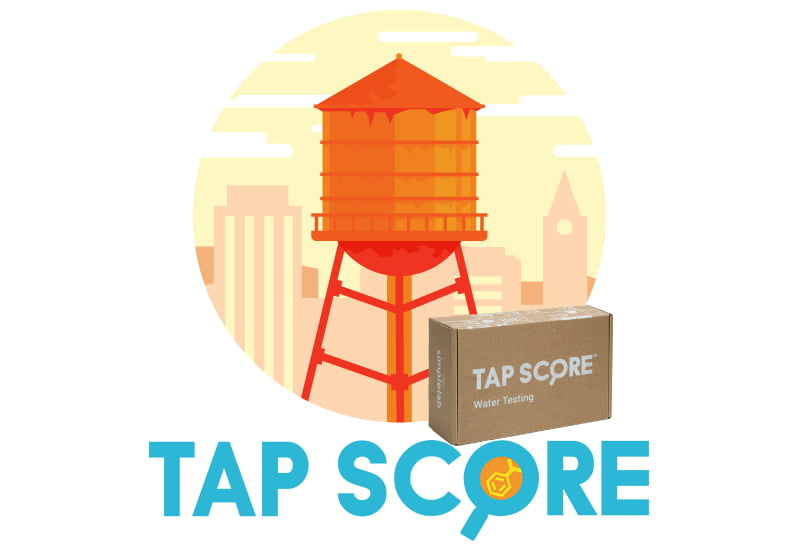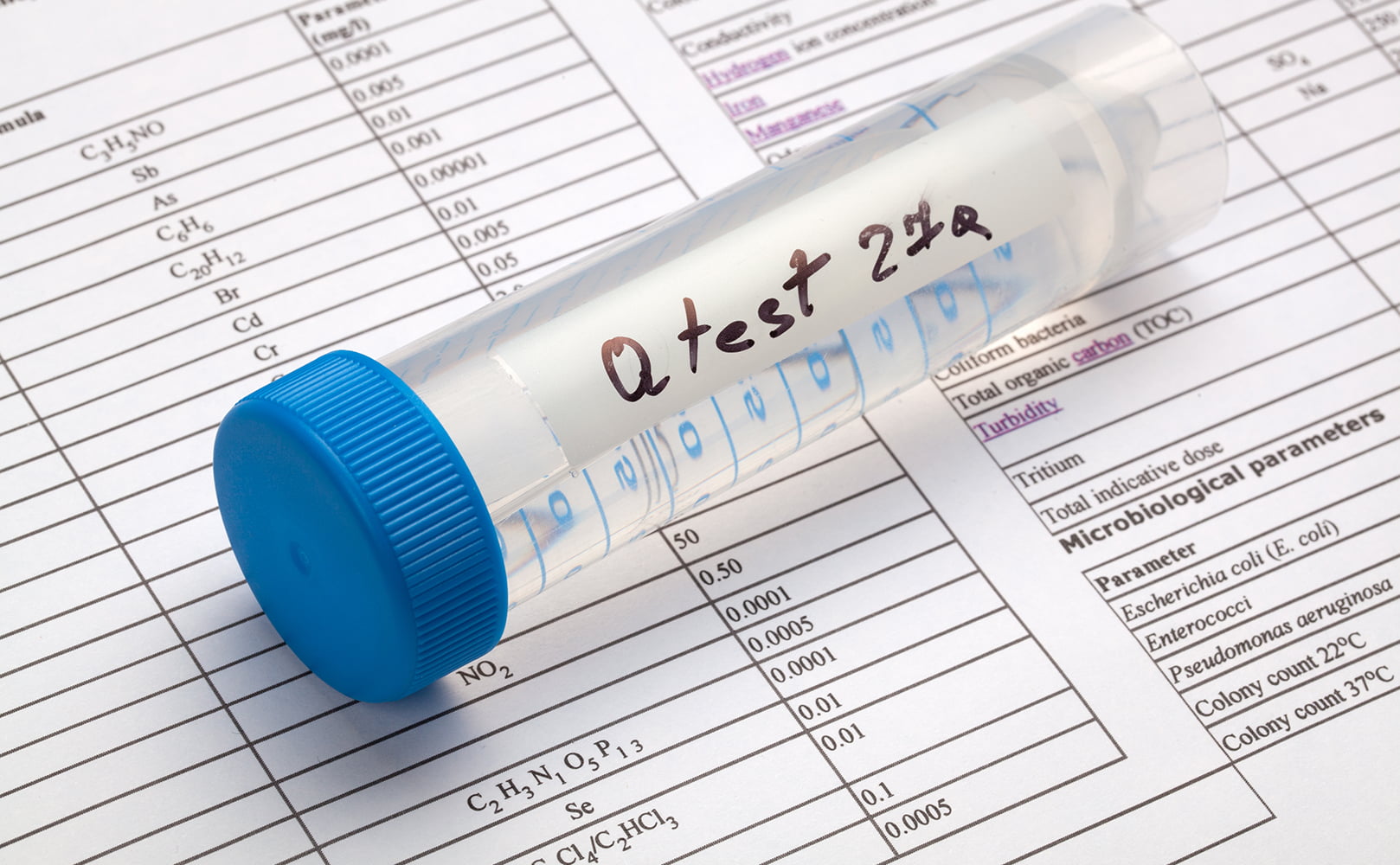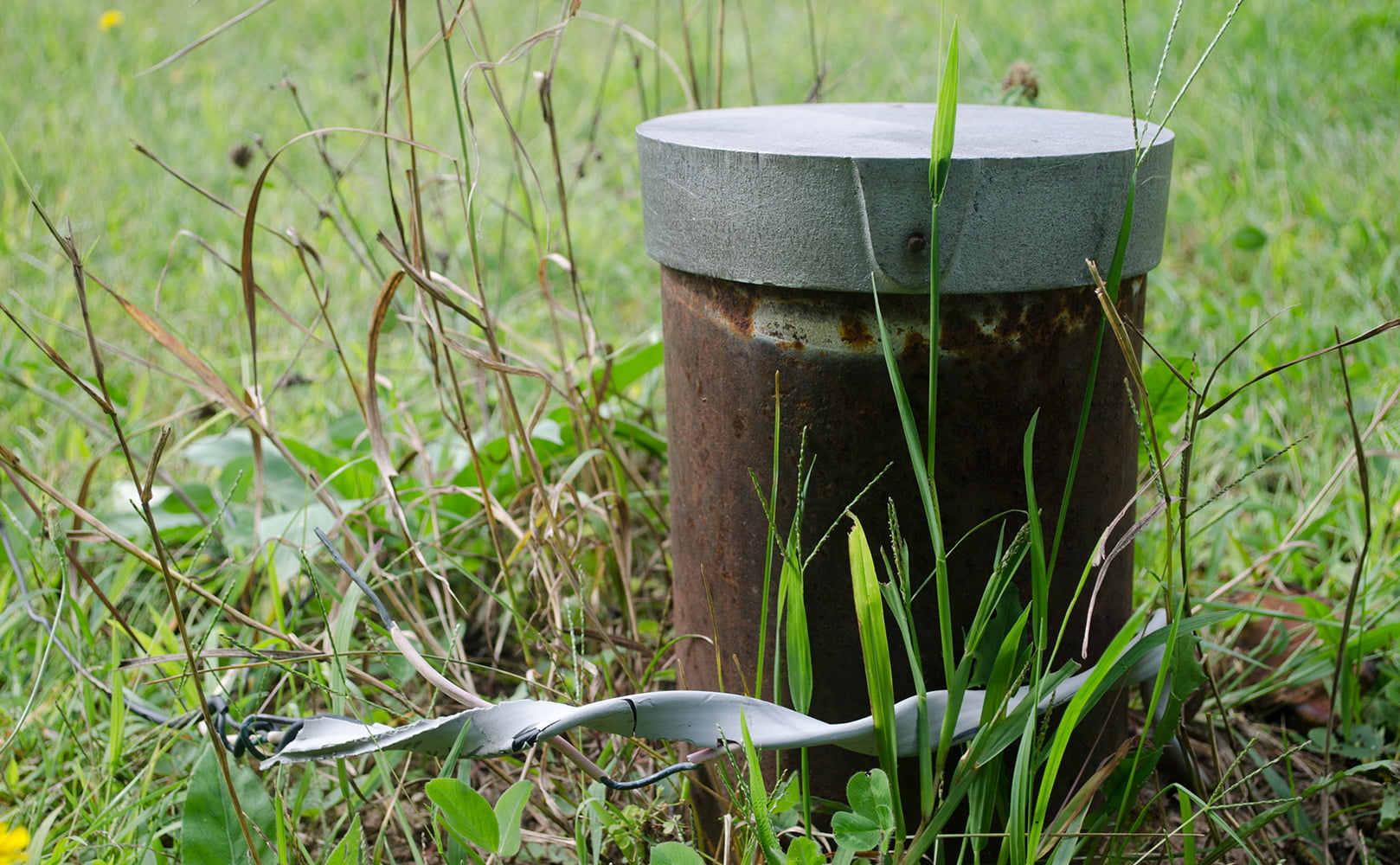Learn How to Test for Lead in Water!
Written by: Gene Fitzgerald // Last Updated: Aug 25, 2023
This page may contain affiliate links. If you buy a product or service through such a link we earn a commission at no extra cost to you. Learn more.
Lead can enter your water supply due to a chemical reaction in lead plumbing materials.
The problem is that you simply cannot see, taste, or smell lead in drinking water. Given the numerous health repercussions of lead-contaminated water, this fact feels like a raging bull charging in your direction.
So, is all of America’s water supply contaminated with dangerously high levels of lead? Thankfully, no! You might be one of the blessed ones too.
Ironically, we can’t say for sure who is exposed to the nasty heavy metal. There is only one way to find out – a water test.
In this guide, we discuss who should be concerned about lead water contamination, how you can test for it, and most importantly, how to filter it out. Ready?
Key Takeaways
Here is how you can test your water for lead:
- Hiring a certified lab – This is the preferred but also the most expensive way. Search the EPA’s website for DEP-certified labs in your vicinity.
- Hire a local water expert or treatment company – They will also provide you with treatment solutions.
- Use a DIY lead testing kit – Simplest and cheapest method. Results may not be entirely accurate, though.
- Ask your local water supplier for a free water quality report – This doesn’t take into account the contamination that might occur through the service line or house plumbing.
You can also check your plumbing directly:
- Use a coin, key, or screwdriver to scratch the outer pipe surface. If the scratched area is silver and shiny, the pipe is made of lead.
- Try using a magnet, as lead is non-magnetic.
When to Test Your Water for Lead
When was the last time you tested your drinking water supply to assess the level of contamination? If your answer is “never” or “too long ago to remember”, – don’t worry, you are not alone.
Many people don’t think about testing the water in their home unless there is an apparent change in taste and smell.
This is because, in the case of tap water, we assume that our water has been filtered and treated at the municipal board. What we fail to take into account is that this treatment process isn’t perfect, and as water flows from the treatment plant to your house it is subject to downstream contamination.
You may fully trust your city’s water board, but the water has to make its way through a network of pipes and then your home’s plumbing system before it flows out of the faucet in your kitchen. So, here is why you should test your water for lead:
Old Houses Constructed Before 1986
If your house was constructed before the year 1986 – the year lead pipes were banned – you are at an extremely high risk of lead contamination. What’s more troubling is that it wasn’t until 2014 that new regulations changed the legal limit for lead in household pipes to 0.25% (from 8% lead content allowed previously).
Lead Service Lines
More than nine million homes in the US still get their water from lead pipes, also called lead service lines. When the government banned lead pipes in 1986, it allowed those in the ground to continue. Hence, lead pipes are widespread and still operational in many states.
According to an estimate, 15 to 22 million people in the US still drink lead-contaminated water.
Honestly speaking, we can’t eliminate the need for lead testing for any household in the US. We advise you to follow your gut and take action. Thankfully, lead testing is neither difficult nor expensive.
Other Ways Lead May Enter Your Home’s Water Supply
Here are a few other ways lead can enter your home’s water supply:
- Copper pipes with lead solder: Most houses built before 1986 used lead solder that contain high levels of the toxic metal.
- Lead goosenecks: Shorter pipes that connect the main service line to your water line may also contain lead.
- Faucets: Some faucets and fixtures inside your house may contain lead.
- Galvanized pipes: Galvanized pipes are sturdy steel pipes dipped in a protective zinc coating to prevent corrosion and rust. They were widely used as a substitute for lead pipelines when lead was banned.
However, as the zinc coating wears off, they become almost as toxic as the lead pipes they were supposed to replace for safety. Precisely, lead particles can get stuck to the surface of rusty galvanized pipes and eventually leak into your water supply.
How to Test for Lead in Water
Luckily, it’s pretty easy to test for lead in water and remove it from your drinking supply. Here’s a guide to assess whether you are at risk of lead contamination.
1. Asking Your Local Water Supplier
You can contact your local water supplier and ask them for a water quality report, called the Consumer Confidence Report.
The U.S. Environmental Protection Agency has obligated all water utilities to test their water and share the CCR report with its users. You can also find the reports online.
The report highlights all important information about the quality and source of your water. In addition, you will find a list of contaminants along with their level of concentration.
If you find out that the levels of lead are above the EPA’s action level of 15 parts per billion (ppb), you’re at high risk. Remember, this is an action level; there is no safe level of lead in water.
Similarly, you can also request an individual water test from your local authority or state. But that will come at a cost, and not all facilities are qualified to conduct the test.
Pros
- It’s absolutely free and convenient to acquire the report. It’s probably already lying with your last year’s water bill.
- All testing is done according to EPA standards.
Cons
- It doesn’t take into account the contamination through your service line or your house’s plumbing.
- The chemistry of your water can change tremendously throughout the year. You might have been dealing with a whole different set of contaminants since the last test.
2. Hiring a Certified Lab
The best way to test your water for lead is to find a certified private laboratory. You want to ensure that the laboratory is certified by your state’s Department of Environmental Protection. Our tip: Use Tap Score by SimpleLab. You can choose between city and well water tests which all contain a lead level analysis.
Get $10 Off! Use Code: BOS10
Alternatively, here’s a step-by-step guide to finding and hiring a suitable lab.
- Go to the EPA’s website and find the list of DEP-certified labs in your vicinity. Alternatively, you can also call the EPA’S safe drinking water hotline to find a lab near you.
- Request the lab to send you a container for the water sample or ask them for details and the quantity of water they need for testing.
- Ask the laboratory how you should perform the test: what time, hot/cold water line, or other important information.
- Only take a water sample early in the morning or at least after 6 hours of the last usage. This means you should also turn off your water-based appliances and postpone showers etc. for at least 6 hours.
- You may want to take multiple samples at the desired intervals.
- Send the sample(s) to the lab and wait for the results.
Pros
- You will have absolute peace of mind that the test results are 100% accurate. All DEP-certified labs follow the criteria set by EPA so you can be sure the testing setup, procedure, and handling are up to EPA standards.
- A lab test doesn’t just tell you whether there is lead in your water or not. In fact, it tells you precisely the concentration of lead in your water supply.
This level is critical to know to select the perfect filtration method. Even if it’s in trace amounts in your water, removing yourself from the lead source is significantly important.
Cons
- A private lab will charge you around $100 for testing your water for lead. Compared to all other options, this one is the most expensive.
- Not to mention, it’s time taking and may require you to make several rounds back and forth to the lab. You’ll make your first round to collect a sterile container for the sample. Then you’ll find yourself going back to deliver your sample. Finally, you have to go pick up the results.
- Some labs may take over 10 days to deliver your result. Depending on the workflow and process, the laboratory in your area may have a longer turnaround time than expected.
3. Have Your Water Tested By a Local Water Expert or Water Treatment Company
You may contact any local water treatment companies to test your water for free. There are numerous water filter brands that offer you free testing to determine the level of contamination in your water supply.
Similarly, you can check Home Depot and Lowe’s websites to find retailers offering a free water test. Fill out the form to schedule a free appointment or in-house consultation with water experts who can guide you about the best possible way to deal with your water woes.
Pros
- Not only do the water experts test your water, but they also provide you with solutions that can help you get rid of any problems.
- What’s best is that the testing is absolutely free and generally quick.
Cons
- The water filtration company may try to pitch its filter systems to you after you’ve taken the test. Obviously, they have the company’s best interest in mind.
- You must share your details with the company. Some people are not comfortable doing so.
4. DIY Testing Using a Water Lead Test Kit
The simplest way to test water at home is to buy a water lead test kit. DIY test kits are simple, inexpensive, and reliable.
Some need to be sent away to a certified lab in bottles provided by the manufacturer. While they produce 100% accurate results, the process can be time taking. Therefore, if you are only concerned about lead contamination, a reasonably-priced and simple lead testing kit (costing $20-$50) would suffice.
All you need to do is dip a strip of test paper into the sample of water you have collected. Either the strip changes color completely or you see a faint line that highlights whether you have a lead problem or not.
If you want a complete report of what’s in your water – other than lead – we suggest you use a send-away kit (costing over $250).
Please remember the best time to conduct a test is when the water hasn’t been used for at least six hours anywhere around the house.
Pros
- It’s safe, fast, and reliable.
- DIY test kits are inexpensive as compared to lab tests.
- Most water kits produce accurate results.
- Not to forget, they are extremely easy to use.
Cons
- It doesn’t highlight the level of lead. It will only signify “positive” or “negative”.
5. Checking Your Plumbing and Pipes
Aging pipes and lead-rich solders are more prevalent than you think. And if you are living in a home or urban area that dates from before 1986, you will likely find at least some amount of lead is used in your plumbing.
Therefore, you must check the plumbing inside your house as well as the header pipe that connects the city line to your main water line. If any pipes are made of copper or plastic, you can find out at just one glance.
In contrast, if the pipes are grey or black, you can perform a simple test to determine whether they are made of lead or steel. Here’s how to find out:
- If the pipe is wrapped, peel off the cover and expose a small area of the metal.
- Then, use a coin, key, screwdriver, or any other similar tool to scratch the outer surface.
- If the scratched area is silver and shiny, the pipe is made of lead.
- Alternatively, you can use a magnet and see whether it sticks to the pipe. If it does, you can be sure it’s not lead. Lead is not magnetic.
If you are still not sure, you can contact a plumber to do the inspection.
Pros
- It’s the quickest way to find out if you are exposed to lead-contaminated water or not.
- It costs nothing at all.
Cons
- It’s impossible to find out the exact level of lead in parts per billion (ppb).
- You miss out on any other contaminants that may be swimming in your water.
- You can’t conduct the test on service lines or header pipes. Even if your house uses galvanized or copper pipes, aging lead service lines are a fairly significant threat.
What If I’m on a Private Well?
Luckily, lead rarely occurs naturally in water. And because you’re not a part of any public water system that may contain lead pipes, you are at a lower risk of lead contamination.
With that said, your home’s pipelines, solders, faucets and so on may contain lead that can leach into your well water. Similarly, some old submersible well pumps also contain lead which could easily seep into your well.
Therefore, you must test your water yourself and replace any lead sources altogether or find a water filter to remove it. Since the government is not responsible for the quality of water from private wells you must be proactive and regularly test for microorganisms, radon, and heavy metals too.
What Can I Do If My Water Tests Positive for Lead?
Here is what you can do if you are sure you are at risk of lead contamination.
Replace Lead Source
The first step should always be to try and replace the lead source entirely. So, replace old pipelines, an old well pump, a lead faucet – you get it.
If that’s not possible…
Lead Water Filters
Lead is quite easy to remove, and therefore many water filtration systems can significantly reduce it in your water. All you need to do is look for a filter using the right type of filter media. These are:
- Activated or catalytic carbon
- KDF
- Cationic exchange resin
- Reverse osmosis membrane
Some high-quality water filter pitchers (like the Clearly Filtered) can effectively remove 99.3% lead. Similarly, you can easily find an under sink or whole house water filter suitable for lead water filtration.
Filters need to go under rigorous testing through NSF to be certified to remove lead. Always look for those filters that meet the criteria of NSF standard 53 (check for lead reduction rate).
For example, some activated carbon filters do an excellent job at removing lead. However, their effectiveness may be limited by the:
- Amount of lead in your water – If it’s too high, carbon filters will exhaust soon. You will need a different type of filter media or replace the filter on a regular basis.
- Presence of other contaminants – If too many other contaminants are in the water, they could be competing for space to adsorb.
This is precisely why we strongly recommend getting a complete water analysis report to find out the level of lead and other contaminants in your water supply to figure which lead water filter you need.
Drinking Bottled Water
The FDA has set the level of lead in bottled water to 5 ppb. So, you are relatively at less exposure to lead.
Quite the contrary, drinking bottled water increases your exposure to BPA, plenty of other plastic toxins like microplastics, and possibly other unregulated contaminants.
Not to mention, bottled water companies are exacerbating global climate change and wasting precious resources.
To top it all, bottled water is 300 times more expensive than regular tap water.
Bottom line: We don’t think it’s a good idea to substitute tap with bottled water. This should be avoided if possible.
How to Reduce Your Overall Lead Exposure
Here are a few ways to reduce your family’s overall exposure to lead.
- Don’t use hot water directly from the tap for cooking or drinking. Hot water has a higher concentration of lead compared to cold water as it dissolves more lead from pipes.
- You can flush the taps and faucets in your home for at least a minute before using any water. Do this primarily when you use water in the morning after being in the line overnight. To reduce wastage, save the water for watering your plants or doing the dishes.
About Lead and Its Health Effects
It’s undeniable that there’s no safe amount of lead for humans. According to recent research, lead exposure has caused around 412,000 annual deaths in the US.
Lead is a cumulative toxicant which means it is stored in your body over time. Therefore, even if you are exposed to lower lead levels over a long time, you may still have to suffer dire consequences.
What’s more, lead is particularly more harmful to children’s health, affecting it in more ways than one:
- Damage the brain and the nervous system
- Stunted growth
- Learning problems
- Behavioral issues
- Hearing and speech issues
- Lower IQ
Similarly, adults exposed to even tiny lead concentrations in drinking water can suffer from:
- Cardiovascular problems
- High blood pressure
- Decreased kidney function
- Reproductive issues
If you have any questions about how to test for lead in water please don’t hesitate to leave a comment below!
Information provided on BOS is for educational purposes only. The products and services we review may not be right for your individual circumstances.
We adhere to strict editorial guidelines. Rest assured, the opinions expressed have not been provided, reviewed, or otherwise endorsed by our partners – they are unbiased, independent, and the author’s alone. Our licensed experts fact-check all content for accuracy. It is accurate as of the date posted and to the best of our knowledge.





